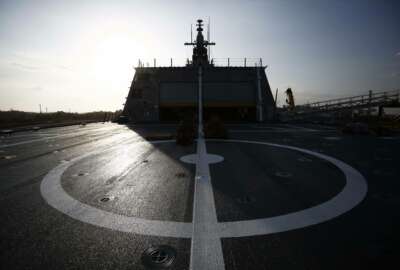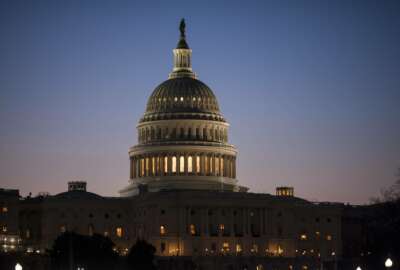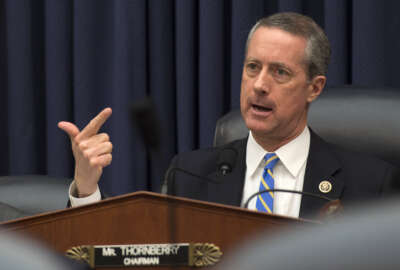
Navy wants to hire more civilians to deal with ship maintenance
The Navy needs 2,000 civilians to deal with its ship maintenance backlog and even more if the fleet size increases.
The Navy needs at least 2,000 more civilian employees to handle the maintenance and possible expansion of its fleet.
Vice Adm. Thomas Moore, chief of Naval Sea Systems Command (NAVSEA), said his command’s shipbuilding and acquisition forces need to grow in order to handle the demands on Navy ships.
“The number one mission priority right now for NAVSEA is the on-time delivery of ships and submarines,” Moore said April 3 at the Air Sea Space Symposium in National Harbor, Maryland. “Today, we only deliver about 40 percent of our ships and submarines out of maintenance availabilities on time and that’s causing great stress for the fleet.”
That maintenance issue is with the Navy’s current fleet of 285 ships. Moore said the extra 2,000 workers would get rid of the maintenance backlog plaguing the shipyards. That would bring NAVSEA’s workforce to just over 36,000.
The Navy hired 16,500 workers over the past five years, but it is still getting its ships out of maintenance late. Part of the reason is because it takes time to train the new hires.
“As you hire all these people, young workforce, you’ve got to them trained. And in the past, it would typically take four to five years to take a new shipyard worker and get them to the kind of a journeymen level where you could trust them to go work on a nuclear submarine or carrier, “Moore told the Senate Armed Services Committee during a March 29 hearing. “Today, we’ve invested a lot of money in our training systems, so that a young worker can come in today and takes some about one to two years to the point that they can actually provide real wrench turning on the ship.”
Still, the Navy and the Trump administration both want to increase the size of the fleet to 355 ships, which would require more shipbuilders, acquisition professionals and engineers.
If the Navy is able to increase its fleet size, NAVSEA would need to take on more engineers. The current engineering workforce is at 512, that number is expected to grow to almost 600 by 2020 with fleet growth.
Moore said at this point the Trump administration’s hiring freeze has had no effect on his command.
“The hiring freeze has had no impact on the shipyards. We have broad authorities to exempt people in the national defense and the people who work in our naval shipyards today. Other than having to fill out some paperwork, we’ve been able to hire the people we need to hire,” Moore said.
But when it comes to actually growing the fleet, limitations on hiring are a different story. The Navy needs engineers and right now they aren’t being hired.
“If we are going to build a 355-ship Navy, we are going to have to build the workforce to do that,” said Allison Stiller, who is performing the duties of principal civilian deputy assistant secretary of the Navy for research, development and acquisition. “You want to be equipped to make sure you have the right level of folks working on the program.”
Stiller said last month that she is skeptical of employment exemptions.
President Donald Trump is requesting $603 billion for the 2018 budget. It’s still unclear how much of that will go to the Navy or if any of it will go to expanding the fleet.
The budget is only a 3 percent increase over what the Obama administration suggested for 2018.
Leaders of the House and Senate Armed Services committees called for the administration to bump up defense spending to $640 billion for 2018.
Copyright © 2025 Federal News Network. All rights reserved. This website is not intended for users located within the European Economic Area.
Scott Maucione is a defense reporter for Federal News Network and reports on human capital, workforce and the Defense Department at-large.
Follow @smaucioneWFED
Related Stories





